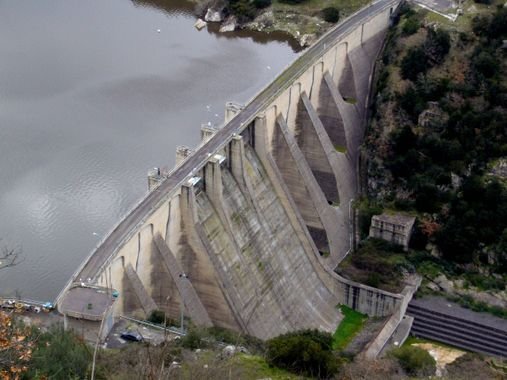The dams are important to many hydro power plants. In this post, will be shown the many types of dam.
Gravity dam

Resist to water pressure due to its weight and has little frame. Are the most common, require less maintenance and can be built in many places. The disadvantages are that requires much concrete and a strong foundation.
Hollow gravity dam

This is the type used by Itaipu, it is an economic version of gravity type, has hollow space in the nucleus to save concrete. However, needs a great number of gaskets sealing.
Arch dam

Are built in narrow valleys and the height can be higher than the width. Has horizontal and vertical curvature, uses the concrete’s compression property and most of hydraulic pressure go to the shoulder pads, which are the dam sides in contact with rocks.


The thickness must follow a ratio between base (b) and height (h).
- If the thickness is thin, \frac{b}{h}<0,2;
- If it has medium width, 0,2<\frac{b}{h}<0,3;
- If it is thick, \frac{b}{h}>0,3;

This type also saves concrete, but the construction is more complex.
Rubble dam with concrete face

Is used fragments of rock and gravel, must be built over solid rock and erosion resistant foundation. The advantages are: Faster construction, simplified logistics, inherent stability to the structure and to install foundations is easier than in the gravity. The main disadvantage is that exists the possibility to crack the face due to rubble accommodation.
Structural concrete dam with buttresses

Supported by buttresses. This type has less base area, requires better foundation due to increase of compression. It is also an alternative to save concrete and the height can pass by 100 meters. The structure design is more complex and it is necessary more concrete forms to make buttresses.

Exist many other shapes of buttresses to this type of dam.






